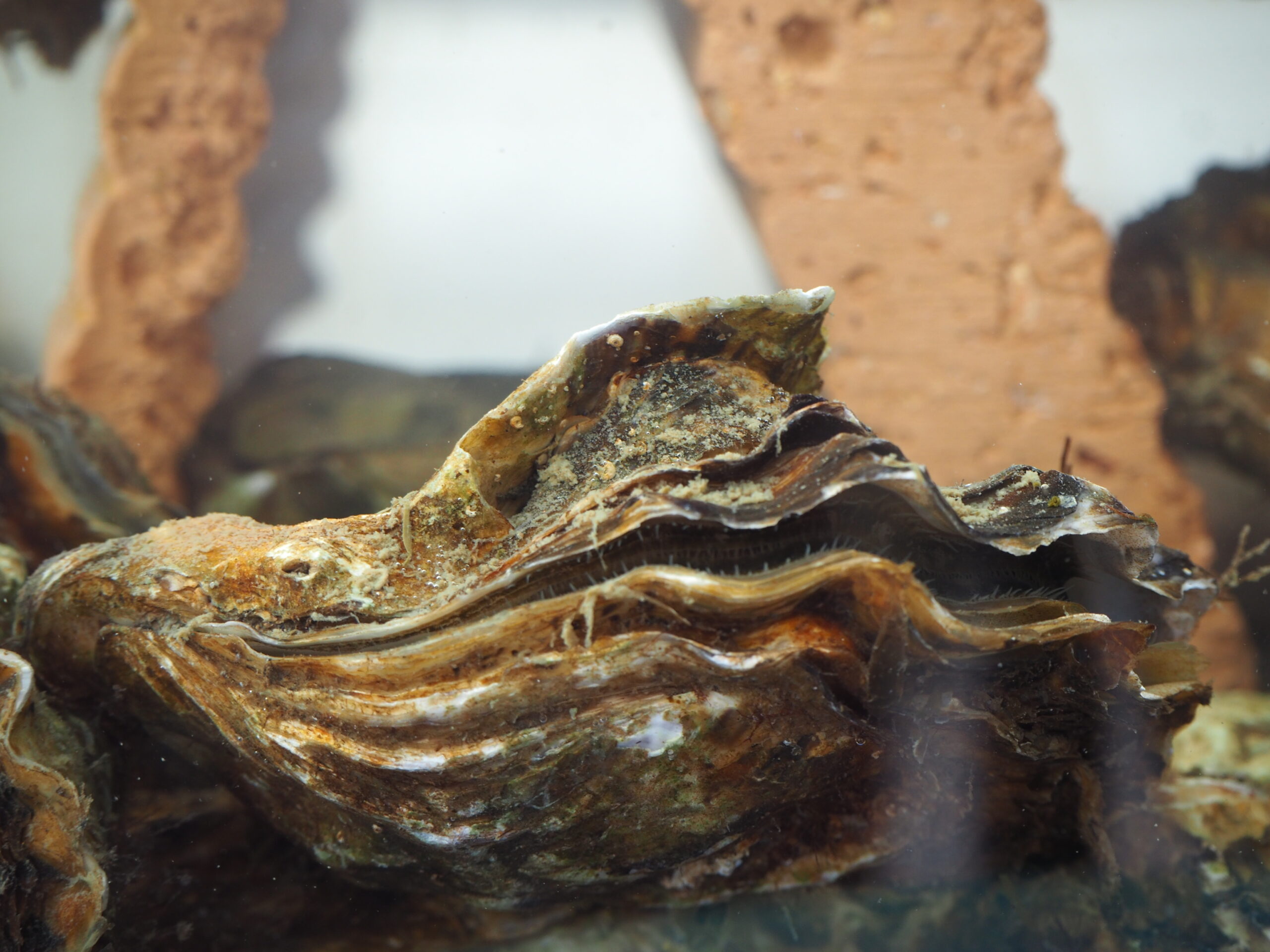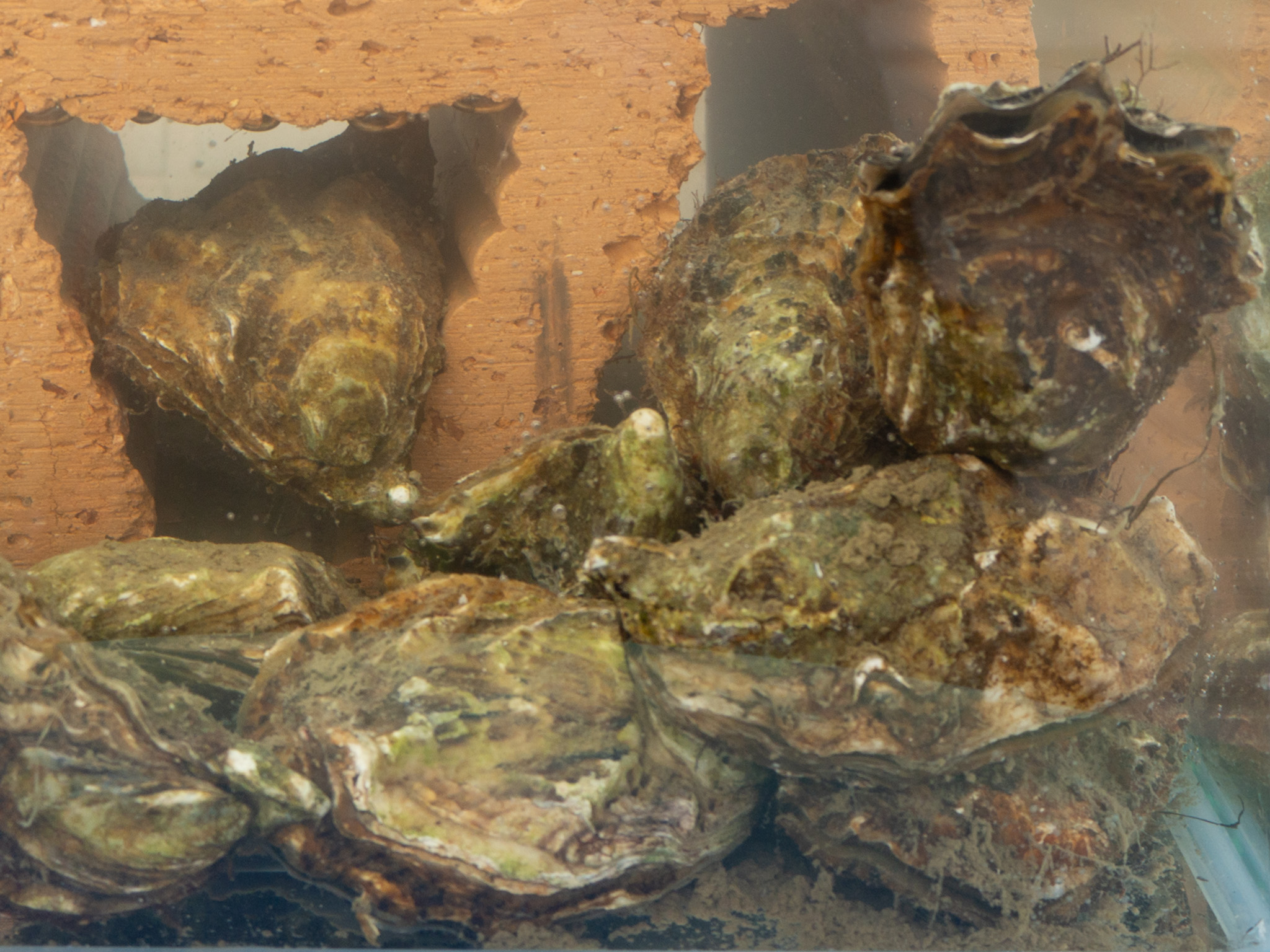We often talk about the incredible capabilities of oysters to filter water. They are highly efficient filter feeders, selectively extracting the most nutritious particles from the water. But how do they do that? And why is it relevant?
Oysters are considered a culinary delicacy in most places. However, most people don’t know how oysters feed and what their favourite “meals” are. In fact, oysters are not very picky eaters. In simple words, they like “dirty seawater”, or more specifically, they feed on algae, phytoplankton and nutrients that are hanging in the water. The richer (or dirtier) the water is, the more they like it.
Oysters constantly feed themselves via a mechanism referred to as ‘filter feeding’. When in the water, oysters take on average 200 litres of water per day through their gills (a).

The gills are lined up with microstructures known as cilia, that act as a sieve, separating solid and semi-solid components from the water. The bulk will include plankton and excess nutrients from fertilisers or treated effluent released in the waterways as a result of human activities, as well as microorganisms.
The water is then released and the solid component is mixed with mucus to form a food matrix that is transported to the mouth of the oyster (b). Then, similarly to other living creatures, the food is swallowed and travels to the stomach (c) and the intestine (d) for digestion and absorption of nutrients essential for growth, repair, reproduction and survival.

Anything that the oysters cannot digest will be expelled as faeces that will come out as a string-like structure coming out of the oysters.
Oysters also have another mechanism to get rid of waste materials, including unwanted food, that they have ingested from the water. They expel them, while trapped in mucus, as sudden clouds or sprays of particles that swirl in the water, before being deposited. These are referred to as pseudofaeces.

As a result, everything that was suspended or dissolved in the water gets trapped in either the faeces or pseudofaeces which become biodeposits that settle down on the ocean floor. And then bacteria and microorganisms will play a very critical role in the ocean.
Once the biodeposits are settled on the ground, these will attract microorganisms associated with oyster reefs that will perform a series of transformations. In this process, they will turn the trapped pollutants from the biodeposits into neutral nitrogen gas, which is then released into the atmosphere or used by other organisms in the ocean.
This process is referred to as the Nitrogen Cycle, and it is essential to keep the ocean in balance
Oysters (and other filter-feeding shellfish) are essential to the health and balance of the ocean. Thanks to their feeding process, the water becomes clean and clear, improving water quality and allowing light to penetrate easily.
By removing excess nutrients from the water, oysters help prevent harmful algal blooms and dead zones. In essence, they are one of nature’s best clean-up crews, diligently working to maintain the balance of their underwater ecosystems